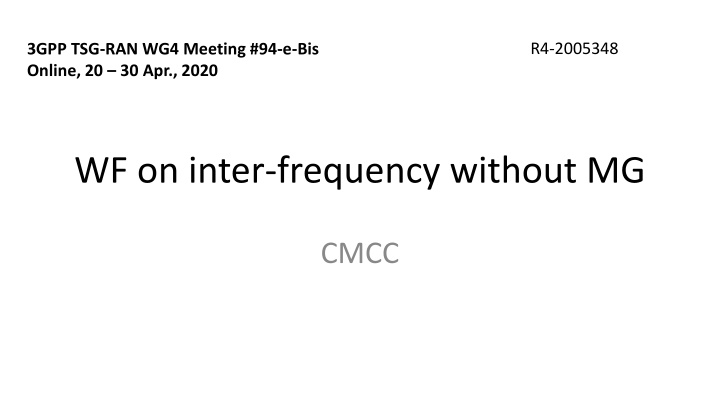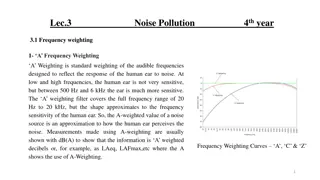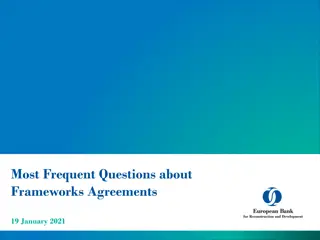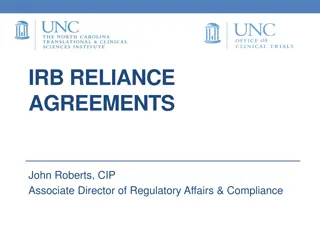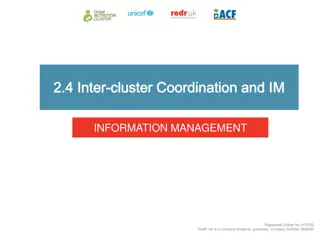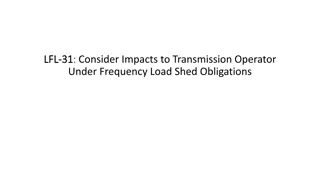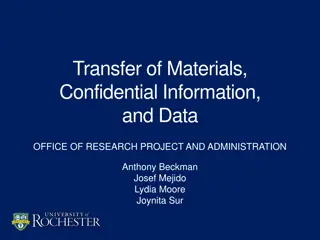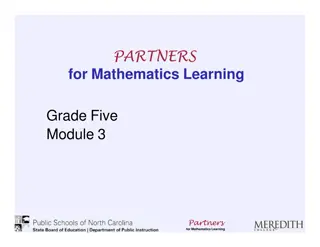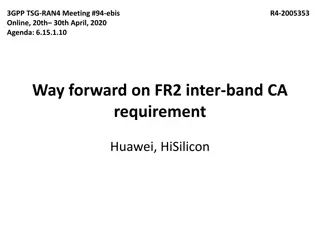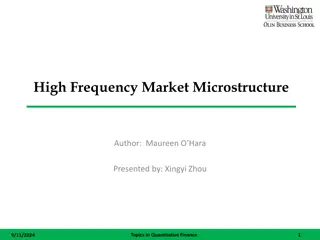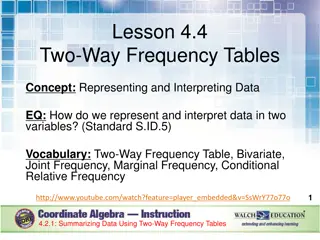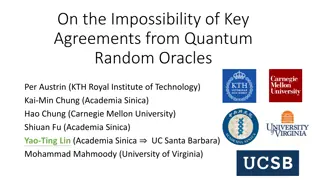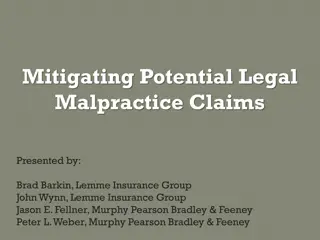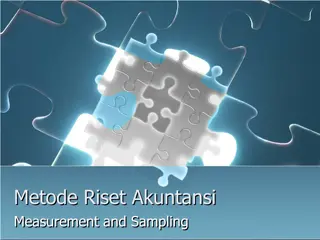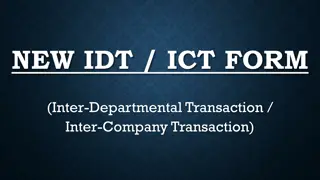Update on Inter-Frequency Measurement Agreements
Recent updates in RAN4 meetings regarding inter-frequency measurement agreements, including issues on UE capability signaling, handling backward compatibility, and network configurations. Discussions on scenarios and clarifications for efficient resource usage.
Download Presentation

Please find below an Image/Link to download the presentation.
The content on the website is provided AS IS for your information and personal use only. It may not be sold, licensed, or shared on other websites without obtaining consent from the author.If you encounter any issues during the download, it is possible that the publisher has removed the file from their server.
You are allowed to download the files provided on this website for personal or commercial use, subject to the condition that they are used lawfully. All files are the property of their respective owners.
The content on the website is provided AS IS for your information and personal use only. It may not be sold, licensed, or shared on other websites without obtaining consent from the author.
E N D
Presentation Transcript
R4-2005348 3GPP TSG-RAN WG4 Meeting #94-e-Bis Online, 20 30 Apr., 2020 WF on inter-frequency without MG CMCC
Background R4-2002250 WF on inter-frequency without MG was agreed in RAN4#94e meeting R4-1915853 WF on inter-frequency without MG was agreed in RAN4#93meeting.
Issue 2-1: Capability of supporting inter- frequency measurement without MG Option 1 (vivo, MediaTek, OPPO, Huawei, Qualcomm, vivo, Intel, Ericsson) : Optional with UE capability signaling Option 2 (CMCC): Mandatory with UE capability signaling
Issue 2-2: Assumption of searcher numbers For UE without CA capability, the number of search assumed in the requirement is 1
Issue 2-3: How to handle the backward compatible issue for network Agreements in RAN4#94-e meeting: Specify the UE measurement behavior in the spec: If all the MOs are inter-freq w/o MG to this UE but NW configured MG, UE will use the MG to perform these inter-freq measurement; Note: Detailed sentences to be captured in the spec can be further discussed when drafting the CR.
Issue 2-3: How to handle the backward compatible issue for network (to be removed) Clarification on this issue when all the MOs are inter-frequency without MG to the UE but NW configured MG: Case 1: In the case SMTC are completely overlapped with MG, it was already agreed that UE will perform measurement within gap. Case 2: In the case SMTC are completely non-overlapped with MG, it was already agreed that UE will perform measurement outside gap. Case 3: In the case SMTC are partially overlapped with MG, if we agree to perform measurement outside gap, UE will perform measurement outside gap, which waste the resource of the configured MG Question: Based on the above clarification, do companies agree that we only need to discuss case 3?
Issue 2-3: How to handle the backward compatible issue for network (to be removed) Option 1 (CMCC, Apple, vivo, OPPO, Intel, Huawei): Inter-frequency measurement with no measurement gap in clause 9.3, when the SSBs of all the configured measurement objects are completely contained in the active BWP of the UE, and part of the SMTC occasions of this inter-frequency measurement objects are overlapped by the measurement gap. UE is expected to conduct the measurement of this measurement object only within the measurement gaps. Option 3 (Qualcomm, MediaTek): If all the MOs are inter-freq w/o MG to this UE but NW configured MG, UE will use the MG to perform these inter-freq measurement if the SMTC are completely overlapped with MG. Comment: Based on the clarification in P6, option 3 was already agreed before. Option 5 (Ericsson): Explicitly enable this feature with a release 16 configuration flag
Issue 2-3: How to handle the backward compatible issue for network When SMTC is partially overlapped with network configured MG in Rel-15 network, UE will perform the inter-frequency without MG measurement within gap. Option 1: UE can aware the network release by implementation. e.g. all the MOs configured by UE are belong to inter without MG, but network still configures MG, then UE can regard this network as R15 network. FFS: Whether it is feasible, and how to capture this in specification Option 2: Explicitly enable this feature with a release 16 configuration flag
Issue 2-4: UE behaviour for inter-frequency measurement w/o MG partially overlapped with MG For CA capable UE : Define requirements based on the assumption that UE perform measurement outside gaps (same as intra-frequency measurement without MG) For non-CA capable UE: Option 1 (Apple, CMCC, vivo, OPPO, Intel, Huawei, Ericsson, Qualcomm): Define requirements based on the assumption that UE perform measurement within gaps Option 2 (MTK): Define requirements based on the assumption that UE perform measurement outside gaps (same as intra-frequency measurement without MG)
Issue 2-5: Scheduling restriction for inter- frequency measurement w/o MG Clarify in the spec that synchronization is assumed for overlapped TDD carriers. (last meeting agreement) When UE performs inter-frequency measurements without measurement gaps in a TDD bands on FR1 and FR2: UE can assume following 2 conditions are fulfilled: SFN and frame boundary across serving cell and inter-frequency neighbor cells is aligned, and the timing of SSBs across serving cell and inter-frequency neighbor cells are aligned UE is not expected to transmit PUCCH/PUSCH/SRS on SSB symbols to be measured, and on 1 data symbol before each consecutive SSB symbols to be measured and 1 data symbol after each consecutive SSB symbols to be measured within SMTC window duration
Issue 2-6: Scheduling restriction when the target SSB has a different SCS grid Option 1 (MediaTek, OPPO, Qualcomm): When the target SSB has a different SCS grid as that of UE s serving cell, UE is allowed to have scheduling restriction in the entire SMTC duration. Option 2 (Huawei, Apple, CMCC, Huawei, Ericsson): No need to specify the scheduling restriction for the case the target SSB has a different SCS grid as that of UE s serving cell.
Issue 2-8: Update the UE capability simultaneousRxDataSSB-DiffNumerology Option 1 (CMCC, Apple, MediaTek, vivo, OPPO, Intel, Huawei, Ericsson): To update the UE capability simultaneousRxDataSSB-DiffNumerology to indicate whether the UE supports concurrent intra-frequency measurement on serving cell or neighbouring cell or inter-frequency measurement without measurement gap and PDCCH or PDSCH reception from the serving cell with a different numerology as defined in clause 8 and 9 of TS 38.133 Option 2 (Qualcomm): Introduce a new UE capability to indicate whether the UE supports concurrent inter-frequency measurement without measurement gap and PDCCH or PDSCH reception from the serving cell with a different numerology as defined in clause 8 and 9 of TS 38.133 Agreement: Keep both options in the LS, and let RAN2 make the decision
